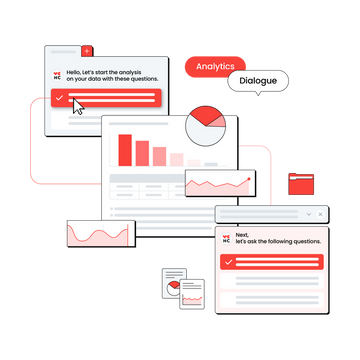NPS (Net Promoter Score)
NPS is a crucial metric for determining if a service has established itself in the market and its potential for future growth. To measure NPS, ask users, "How likely are you to recommend this service or product to others?" on a scale of 0 to 10. Scores are classified into:
- 0-6: Detractors
- 7-8: Passives
- 9-10: Promoters
Surprisingly, many marketers and product managers are unaware of NPS. While it's possible to grow a service without knowing NPS, it is widely used and beneficial. The formula for calculating NPS is:
Percentage of Promoters (%) - Percentage of Detractors (%)
A high NPS is a positive signal, and an NPS above 30% indicates good service reception. Tesla, for instance, has an NPS over 90. Domestically, services like Toss and Danggeun Market likely have high NPS scores.
It's more effective to clearly measure NPS than to design complex surveys with ambiguous results. When conducting an NPS survey, always ask why users would or wouldn't recommend the product to identify areas for improvement. Enhancing these areas can raise the NPS, although it is challenging. Thus, obsessing over product and user data is crucial in growth marketing.
k-factor (Viral Coefficient)
The k-factor measures how viral a service is. During the pandemic, Clubhouse became popular, even leading some to buy iPhones just to use the app. Clubhouse required an invite to join, creating organic promotion without heavy marketing expenses. The k-factor is calculated as:
Number of Invites Sent per User * Conversion Rate of Invited Users
For example, if you have 10 Clubhouse invites and 2 friends join after receiving an invite, your k-factor is 2. A k-factor above 1 indicates growth, while below 1 suggests stagnation. Enhancing the k-factor involves encouraging users to invite others and increasing the conversion rate.
Toss's explosive growth is due to its viral elements like the "remittance support fund" event, which rewarded users for inviting friends to use the service. Despite some pushback, such viral strategies can significantly increase active users.
North Star Metric
The term "North Star Metric" also refers to a key metric or an "aha moment." It signifies the metric that must be continuously improved to ensure the service's success. Let's take e-commerce as an example. In e-commerce, revenue is not the North Star Metric. Revenue is an outcome. The North Star Metric is identifying and quantifying the patterns exhibited by customers who make purchases to achieve revenue or sales goals.
For instance, it is well-known that Facebook considers whether a user has added seven friends within their first week as a key metric. Similarly, Slack looks at whether a user has sent 2,000 messages after signing up. In other words, having a large number of users exhibiting these patterns is crucial for the service's growth.
However, it's a mistake to assume that just because these companies have identified their North Star Metrics, your service can simply adopt the same ones. The usage patterns of each service are different, and while you can refer to these examples, applying them directly to your service is unlikely to be effective.
Finding your North Star Metric is not easy. Some services have taken up to six years to identify theirs. There are many instances where services have failed because they couldn't find their North Star Metric. While data analysis increases the likelihood of finding it, I believe it's crucial to continually experiment and gather candid feedback from customers who have already made purchases or used the service. This persistent effort is essential for discovering your North Star Metric.
Conclusion
We discussed three key metrics for service growth: NPS, k-factor, and North Star Metric. While not all growth marketers handle the entire process of data collection, organization, and dashboard creation, understanding these metrics is crucial.
Growth marketers of beloved services listen to customer feedback and analyze data. Knowing and accurately interpreting these metrics sets apart a systematic approach to service management. If you aim for structured growth, remember and master these metrics.






